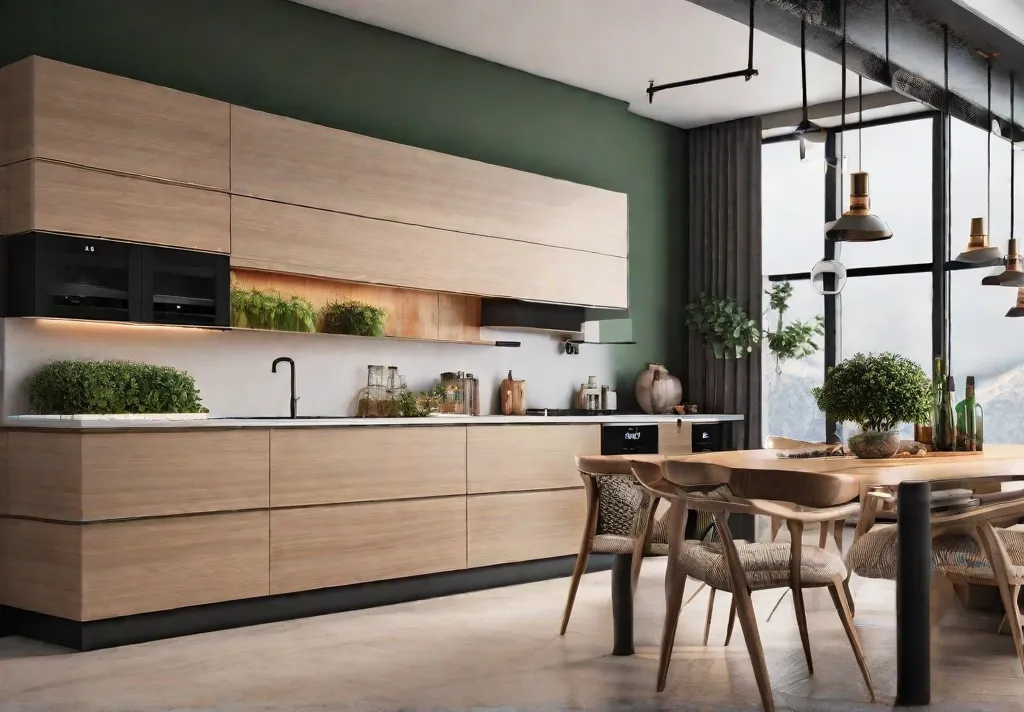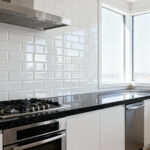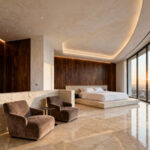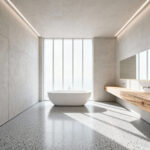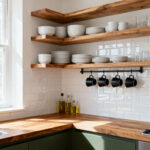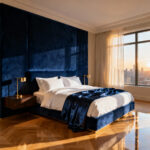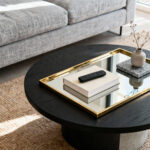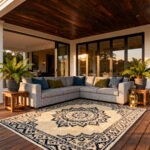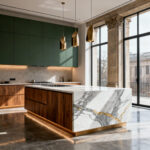As a home decorator and design blogger based in Portland, I know firsthand how important the kitchen is in apartment living. It’s not just a place to prepare meals – it’s the heart of the home, where family and friends gather to share stories, enjoy good food, and connect with one another. That’s why creating a warm and inviting atmosphere in your kitchen is crucial.
Color has a powerful effect on our mood and perception of a space. The right palette can transform a kitchen from cold and sterile to cozy and welcoming. In this post, I’m excited to share eight color schemes to help you achieve that perfect balance of comfort and style in your kitchen.
Whether you’re a design enthusiast or simply looking to refresh your cooking space, these color palettes will provide the inspiration and practical tips to create an atmosphere that makes you and your guests feel right at home. So, let’s dive in and explore how you can use color to elevate your apartment kitchen!
Earthy Tones
Earthy tones have an uncanny ability to ground a space and evoke a sense of tranquility. These warm, organic hues inspired by nature – including browns, beiges, and greens – can create a cozy atmosphere that feels inviting and comfortable in your kitchen.
The psychological effects of these colors are pretty remarkable. Brown is considered a stable and reliable color, while green promotes relaxation and growth. Beige, on the other hand, is associated with warmth and comfort. Combining these earthy shades can create a harmonious balance that encourages positive emotions and feelings.
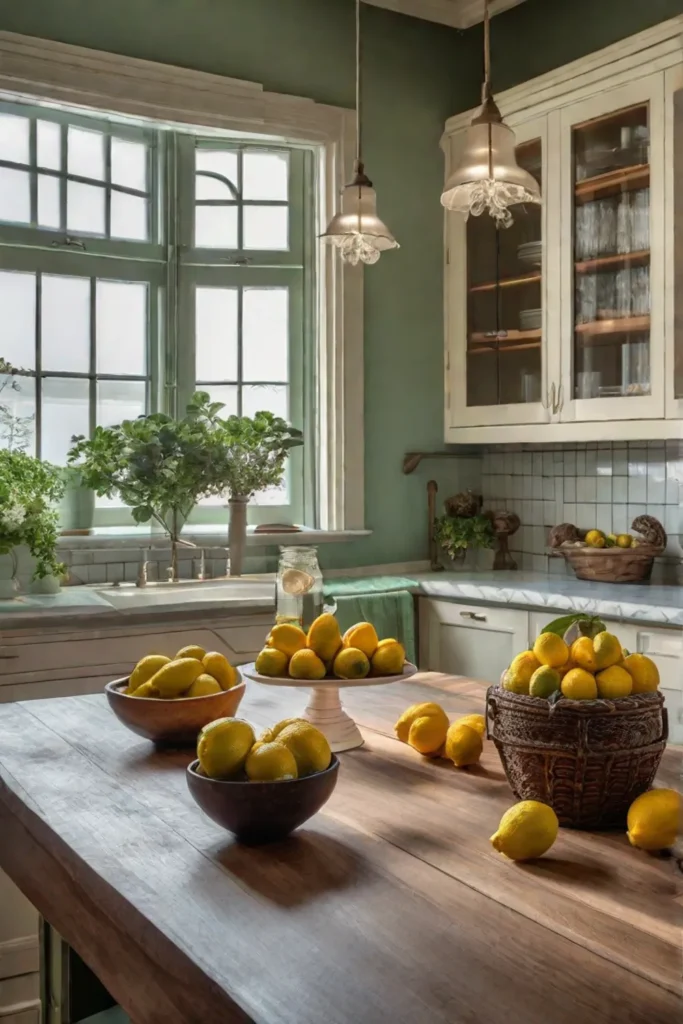
As interior designer Sarah Richardson explains, “Natural materials bring a calming effect to any room.” Similarly, architect Michael Graves believes that “the best interiors connect us with the outdoors.” These experts emphasize incorporating natural elements like earthy tones into your kitchen design to achieve a warm and welcoming ambiance.
When working with a small apartment kitchen, choosing the right shades is crucial. A soft, muted olive green or sage can add depth without overwhelming the space. Pairing different earthy tones, like a light sandy beige with a dark chocolate brown, can create visual interest and texture. Just be mindful of the lighting in your kitchen – lighter shades may be more suitable if there is little natural light.
Vibrant Citrus
Citrus colors in the kitchen can create a warm and inviting atmosphere while also having positive effects on mood and appetite. Bright hues like orange, yellow, and lime can energize them, making them ideal choices for the apartment kitchen.
To prevent the space from feeling too overwhelming, balancing these vibrant colors with neutral tones is essential. For example, pairing a bold orange wall with white cabinets or countertops can create a visually appealing contrast without being overpowering. Similarly, lime green accents against a neutral backdrop can add a pop of color without dominating the room.
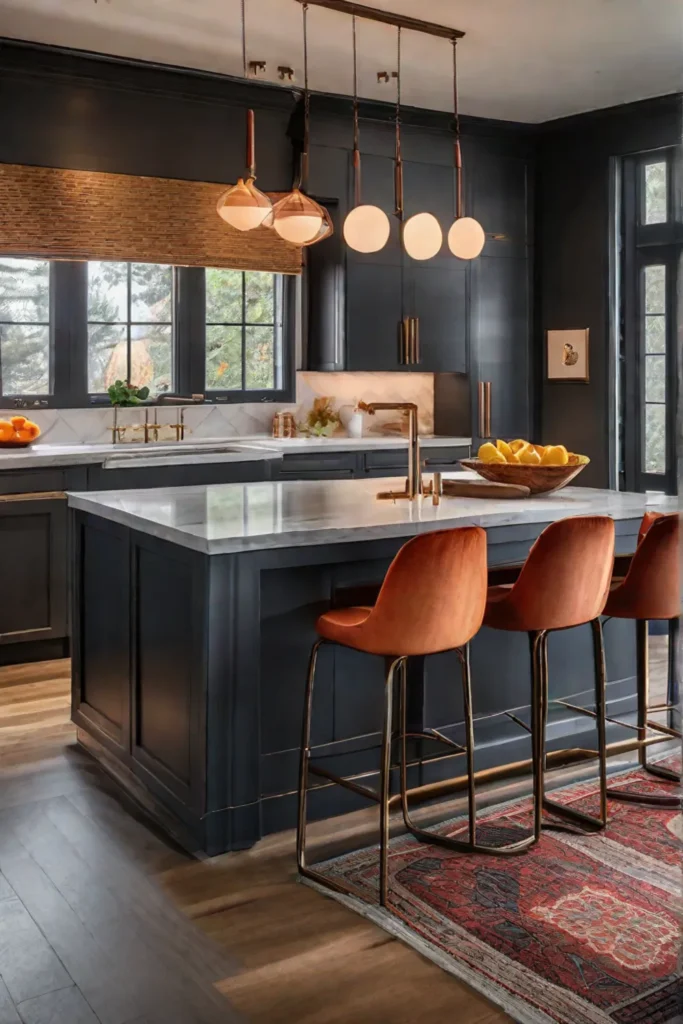
Lighting also plays a crucial role in showcasing the beauty of citrus colors. Natural light can help bring out the warmth and depth of these shades, while artificial lighting can provide additional illumination when needed. Consider installing under-cabinet lights or pendant fixtures in complementary colors to highlight the vibrancy of your chosen palette.
According to a recent study, 74% of homeowners believe color is a significant factor in their home decor decisions. While 59% of homeowners prefer neutral colors for their kitchen, 41% opt for bold hues. By incorporating vibrant citrus tones into your apartment kitchen, you can create an energizing, inviting atmosphere that stands out.
Cool Blues and Greens
Cool blues and greens are perfect choices for creating a warm and inviting atmosphere in your apartment kitchen. These soothing colors have been proven to evoke calmness and relaxation, which can be especially beneficial in the often-busy kitchen space.
When used correctly, blues and greens can make your kitchen appear more spacious and airy, helping alleviate the cramped feeling of apartment living. The way these colors reflect light effectively is a critical factor in this visual expansion.
Pair cool blues and greens with contrasting materials such as wood and metal to achieve a modern look. For example, a blue cabinet paired with wooden countertops or a green backsplash combined with stainless steel appliances can create a stunning visual effect.
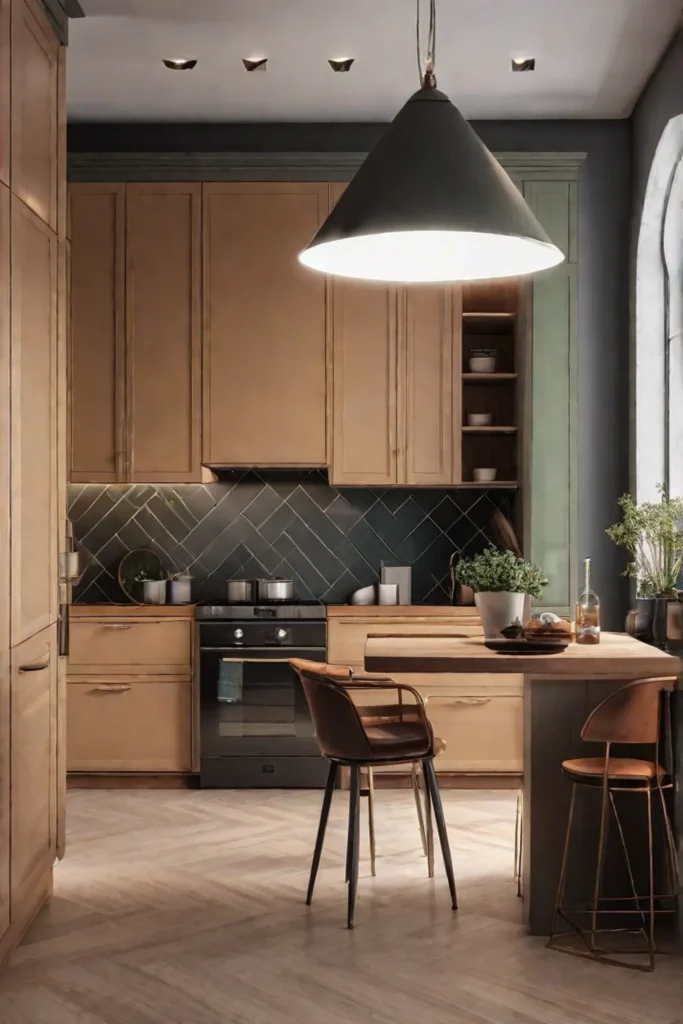
One successful example of this color palette in action is the kitchen designed by Studio DB Interiors, where a soft shade of blue was used on the walls and cabinets. At the same time, white marble countertops added a touch of sophistication. Another inspiring kitchen is the one designed by Arent&Pyke, featuring a beautiful green hue on the wall tiles, complemented by brass hardware and timber flooring.
By incorporating cool blues and greens into your apartment kitchen, you can create a serene atmosphere that feels spacious and inviting. The soothing nature of these colors can help reduce stress and promote a sense of calm, making your kitchen a true oasis within your home.
Warm Neutrals
Neutral colors, such as white, gray, and beige, have long been famous for creating warm and inviting spaces due to their versatility and ability to complement various styles. These colors can make your apartment kitchen feel more welcoming by providing a clean, fresh backdrop for other elements within the room.
The range of neutral colors extends beyond white or beige. Soft whites like cream and eggshell can create a cozy atmosphere, while rich tans add depth and warmth, like camel and caramel. For example, incorporating a cream cabinetry color can help balance out the coolness of stainless steel appliances and provide a warmer contrast.
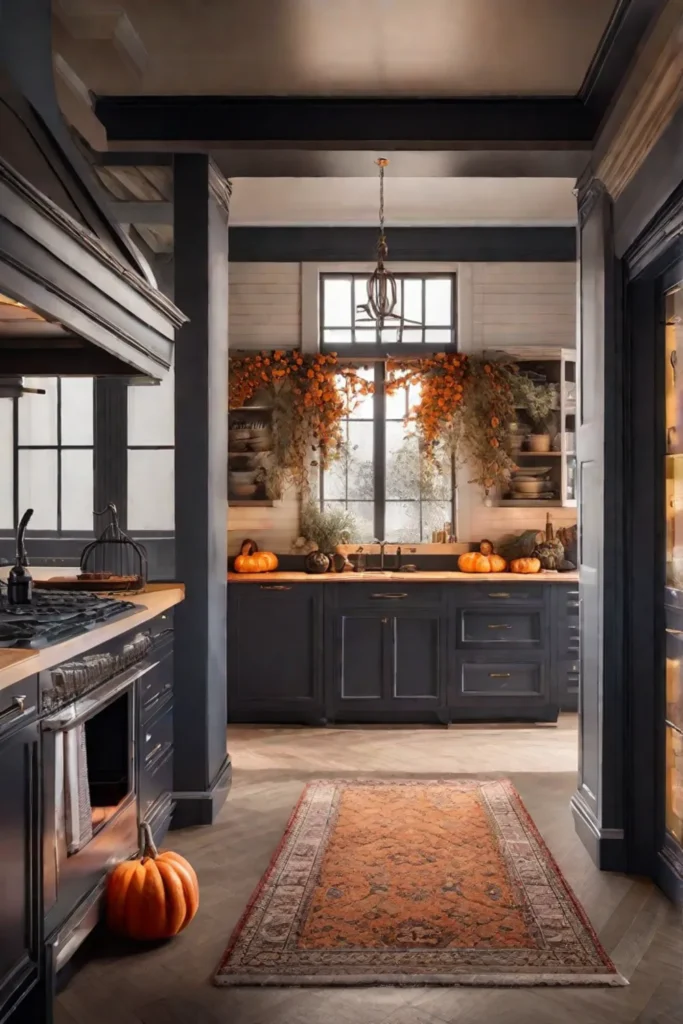
Adding texture and layers is essential to prevent neutral palettes from appearing too flat or monotonous. This could include using different textures of materials, such as matte paint finishes, natural wood accents, and plush fabrics like velvet or linen. Accessories, like throw pillows, area rugs, and wall art, can also bring visual interest to the space without overwhelming its simplicity.
Neutral color schemes remain a top choice among modern apartment dwellers, as they offer a timeless appeal and can quickly adapt to changing design trends. According to a report by Zillow, homes with neutral color schemes sell faster than those with bolder hues. Furthermore, neutral palettes allow for easy redecoration throughout the year, as seasonal changes can be incorporated through accent pieces rather than major renovations.
Bold Monochromatic
Monochromatic schemes are famous for creating a cohesive look in small spaces like apartment kitchens. These designs use various shades and tones of a single color throughout the space, making it easy to create a unified aesthetic while adding depth and interest.
The uniformity of a monochromatic scheme ensures that all elements in the room share at least one common hue, providing a sense of harmony and balance. This can create a warm and welcoming atmosphere, especially when using soft or earthy tones. Additionally, the consistency of colors allows for flexibility in choosing accents and accessories, as virtually anything within the same color family will fit seamlessly into the overall look.
However, avoiding the potential for monotony that can come with overusing the exact shade is essential. Consider using different shades and textures within the chosen color palette to add depth and visual interest. For example, pair deep jewel tones with lighter pastels or mix matte finishes with glossy ones. Incorporating varying textures through materials such as wood, metal, and fabric can also help break up the uniformity of the color scheme.
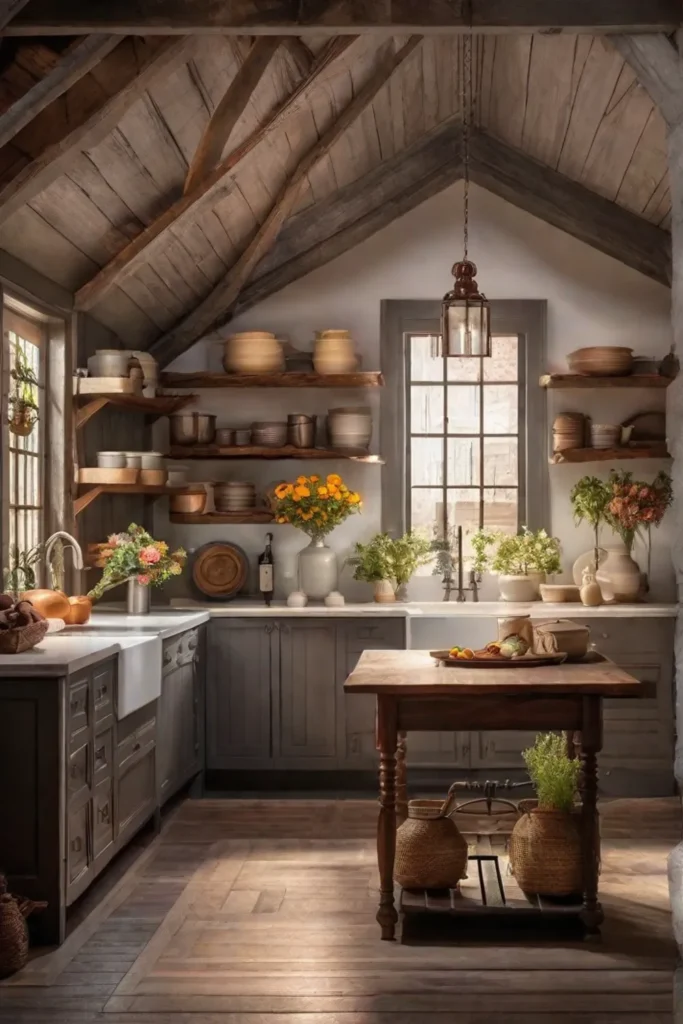
One successful example of a monochromatic kitchen is a white-on-white design, where careful consideration of texture and light can result in a clean, airy space that still feels warm and inviting. Another option is to use various gray tones, which have become increasingly popular due to their versatility and ability to evoke calmness and sophistication. Earthy colors like olive green, burnt orange, and terracotta can also provide a natural warmth when used in a monochromatic scheme.
The key to making a bold monochromatic scheme work in your apartment kitchen is to thoughtfully select shades and textures that complement each other, ensuring the space remains visually attractive and maintains a warm and inviting atmosphere.
Soft Pastels
Soft pastels are famous for creating a warm and inviting atmosphere in apartment kitchens. These gentle shades have a soothing effect on the eyes and can brighten a space without overwhelming it.
The psychological impact of pastels is quite remarkable. Due to their subtle color intensity and soft light reflection properties, these colors evoke feelings of calmness and tranquility. Pastel hues can create a serene environment that reduces visual stress and eye strain, making your kitchen a truly relaxing space.
While pastels may not significantly brighten a kitchen, they actually do so indirectly. Using lighter shades makes the room’s overall impression brighter, even if individual hues are less vibrant than other options.
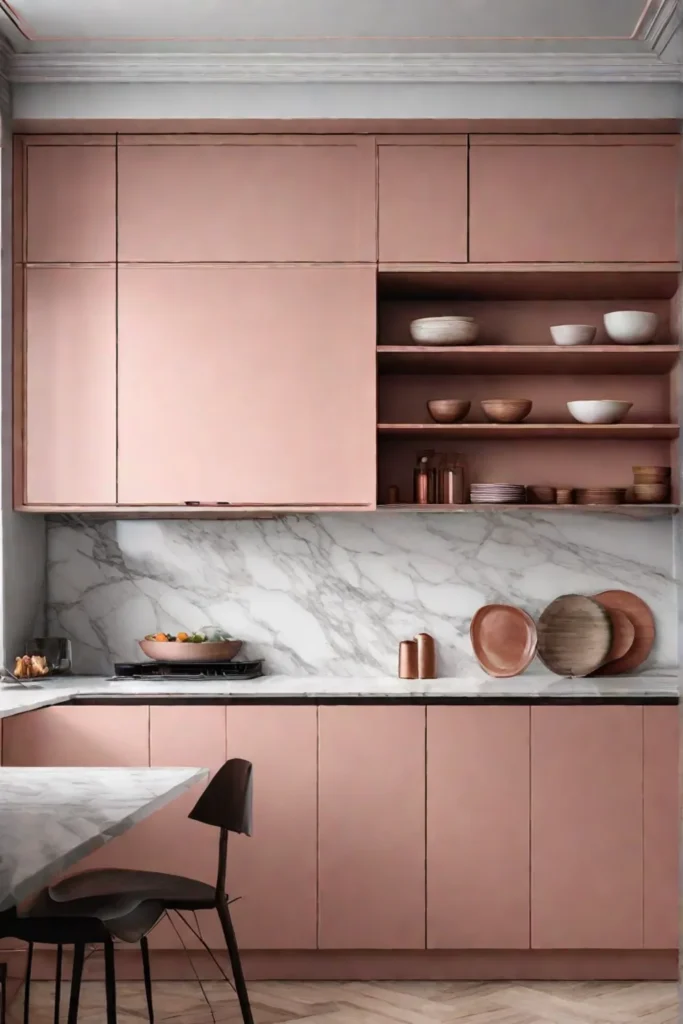
Pair them with natural materials like wood or metallic accents to achieve a chic, modern look with pastels. For example, a soft yellow kitchen can be complemented by wooden countertops or gold hardware. Similarly, adding brass accents or a wooden island can enhance a pale blue kitchen.
For inspiration, take a look at these pastel kitchen designs:
- A soft pink kitchen featuring blush cabinets and white marble countertops
- An alluring lavender kitchen with purple cabinetry and gray accent walls
- A delicate mint green kitchen paired with black granite countertops and stainless steel appliances
Incorporating soft pastels into your kitchen can create a welcoming ambiance that feels calming and cheerful. These soothing shades can transform your cooking space into a serene oasis within your home.
Rich Jewel Tones
Adding rich jewel tones to your apartment kitchen can create a warm and inviting atmosphere while imparting a sense of luxury and depth. These deep, saturated colors, such as ruby red, emerald green, and sapphire blue, have a timeless allure that never goes out of style.
The psychological appeal of jewel tones is undeniable. These rich colors evoke warmth and comfort, making them perfect for creating a cozy ambiance in your kitchen. They are also associated with wealth and exclusivity, adding an element of sophistication and luxury to any room.
To balance the boldness of jewel tones, it’s essential to introduce lighter, neutral accents. White or cream cabinets paired with dark countertops can create a stunning contrast that highlights both colors without overwhelming the space. Additionally, incorporating natural wood elements, such as wooden shelves or a rustic dining table, adds warmth and texture to the overall look.
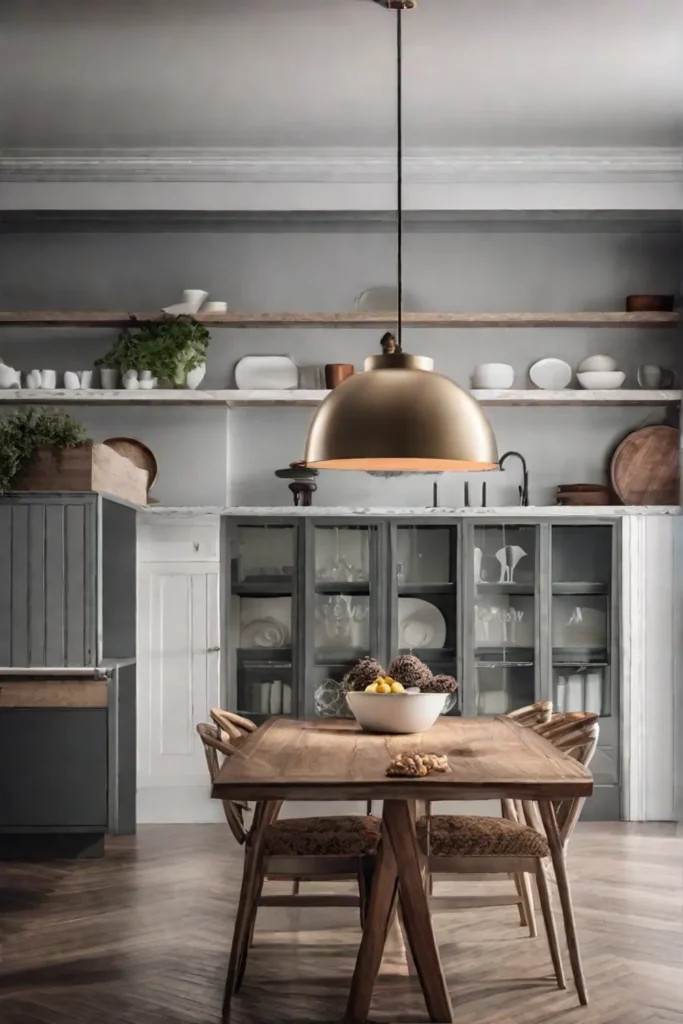
According to interior designer Brittany Jepsen, jewel tones in small kitchen spaces can make them appear larger by drawing attention away from the walls and towards the furniture. She recommends adding pops of color through accessories, such as dishware, artwork, or even a statement light fixture.
Designer Emily Henderson also suggests considering the lighting in your kitchen when choosing jewel tones. Darker colors may require additional artificial light sources to maintain a comfortable illumination level.
By balancing rich jewel tones with neutral accents and thoughtfully incorporating lighting, you can create a warm and inviting atmosphere in your apartment kitchen that exudes luxury and depth. Whether you opt for a ruby red, emerald green, or sapphire blue palette, these bold colors will make a lasting impression.
Retro Color Schemes
Retro color schemes bring fun and nostalgia into your apartment kitchen, reminiscent of the ’60s and ’70s when bold hues ruled the roost. These vibrant combinations, like teal and mustard or pink and turquoise, evoke memories of vintage kitchens and add character to your space.
To update these retro palettes for today’s style, choose a base color from the palette and use it sparingly on walls or cabinets. Accentuate the look with more minor pops of bolder shades from the same palette. For example, if you opt for a teal base, introduce mustard yellow through accent pieces like curtains, throw pillows, or artwork.
Accessories play a crucial role in enhancing the overall aesthetic of your retro-inspired kitchen. Consider incorporating retro-style accents like patterned wallpaper, vintage dishware, and geometric rugs. As for appliances, opt for those with a stainless steel finish or in a bright, eye-catching color that matches your chosen retro palette.
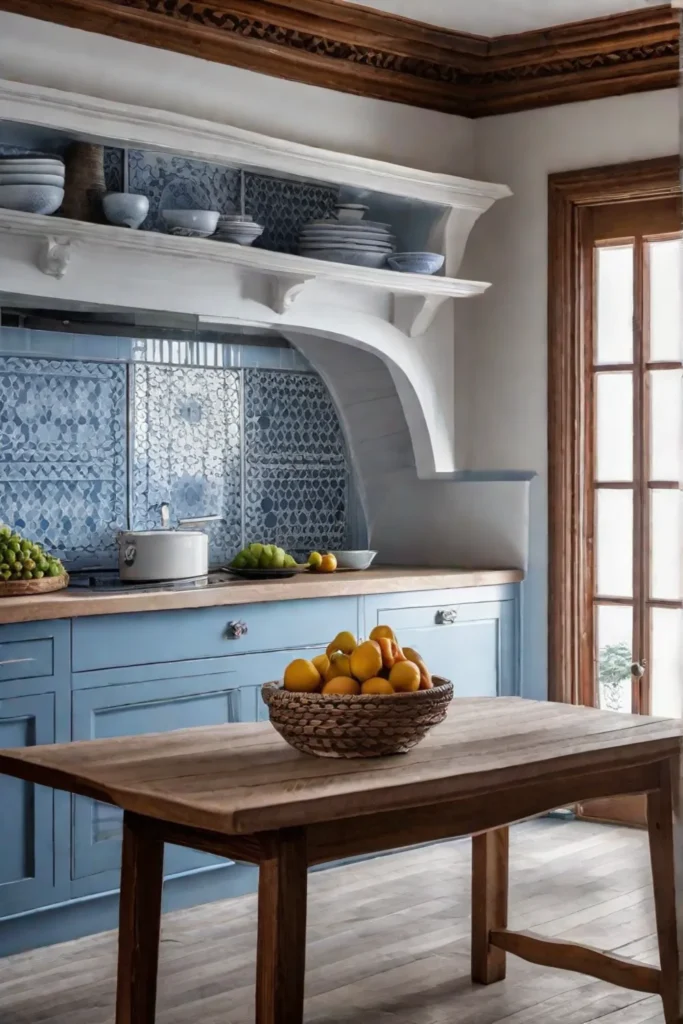
Some popular retro color combos include:
- Teal and mustard
- Pink and turquoise
- Avocado green and white
- Bright red and black
- Orange and brown
These combinations offer a lively contrast against neutral backgrounds, making them ideal choices for adding a retro touch to your apartment kitchen.
According to recent design trends, retro color schemes were among the top 10 color trends for kitchens. While 60% of homeowners prefer a neutral color palette for their kitchen, 40% opt for bold colors – the perfect opportunity to embrace a retro-inspired look in your cooking space.
Conclusion
Ultimately, choosing the right color palette is the key to creating a warm and inviting atmosphere in your kitchen. Whether you’re drawn to the calming influence of cool blues and greens, the comforting embrace of warm neutrals, or the bold statement of jewel tones, the color choices you make can profoundly impact the overall feel of your kitchen.
As you consider these eight color palettes, think about your personal style, the layout of your kitchen, and the overall vibe you want to achieve. Feel free to experiment, mix, and match different elements to find the perfect combination that speaks to you.
And remember, the beauty of color is that it’s endlessly versatile. So have fun with it! Inject some retro flair, create a serene oasis with soft pastels, or ground your space with earthy tones. The possibilities are endless, and I can’t wait to see how you transform your apartment kitchen into a warm and inviting haven.
Now, I’d love to hear from you. Which of these color palettes resonates most with you? Or do you have some inspiring photos of your own kitchen color transformation to share? Let me know in the comments below – I’m always eager to connect with fellow design enthusiasts and see the creative ways you bring your spaces to life.
